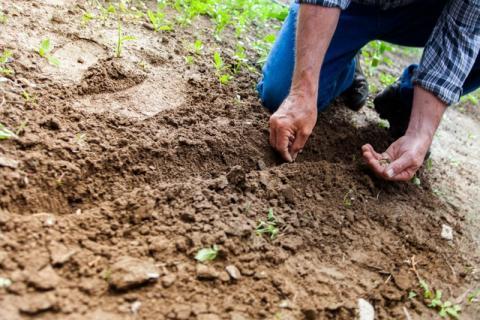
Many of the organic gardening techniques used today have been adopted from Native Americans. One of the most popular of these is the Three Sisters technique, which is also commonly known as companion planting. This technique was based off an Iroquois legend, which involved a story about corn, beans, and squash. Legend has it that the three vegetables were three inseparable sisters who would only flourish when they were planted alongside each other. This method of planting works well because each of the plants benefits one another. For those of you who are interested in trying the Three Sisters gardening technique, here are 4 basic steps.
1. Choose a space. The best time to start growing is late or early spring. The space you choose will need to have access to full sun. Test the soil to make sure that it is healthy. If it is not, add in the nutrients it needs, such as organic compost or fertilizers. To obtain a good corn harvest, a 10×10 square foot of space is the minimum area required, so please keep this in mind.
2. Create the mounds. Create flat-top mounds for each garden row. Planting your mounds about 4-5 inches high can help improve soil drainage. Some people even choose to make 1 foot mounds.
3. Plant the corn. Plant corn seeds 6 inches apart throughout each mound. Wait until the corn grows 4-5 inches tall before you start to plant your beans and squash.
4. Plant the beans and squash. Plant 4 bean seeds 3 inches apart, and in a square-like manner around each corn plant. On one side of a mound-edge—about one foot between and away from the bean seeds—plant your squash seeds.
The Iriquoise used climbing beans, otherwise known as common beans, and would use the corn stalks like poles for the bean-vines to climb. The beans in return create nitrogen for the soil, and the squash leaves act as a type of mulch. It is absolutley brilliant how these three vegtables naturally work together.
The Three Sisters gardening technique as well as many other Native American gardening and farming methods have been recorded in history as saving many European settlers from the brink of starvation. It’s one of the main reasons why Thanksgiving Day is celebrated. This technique is even featured on the reverse-side of the 2009 U.S. Sacagawea Native American dollar coin. There are many different variations of the combination gardening done by other Native American groups. This technique of gardening can be very particular, and it may take some time to master, but it’s totally worth it.
Stay tuned for more organic home gardening tips and ideas!








